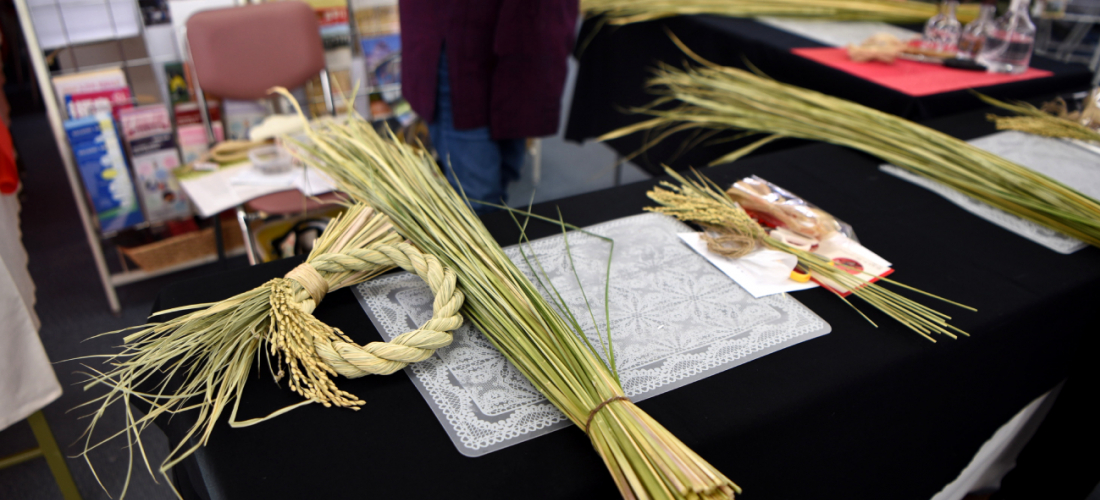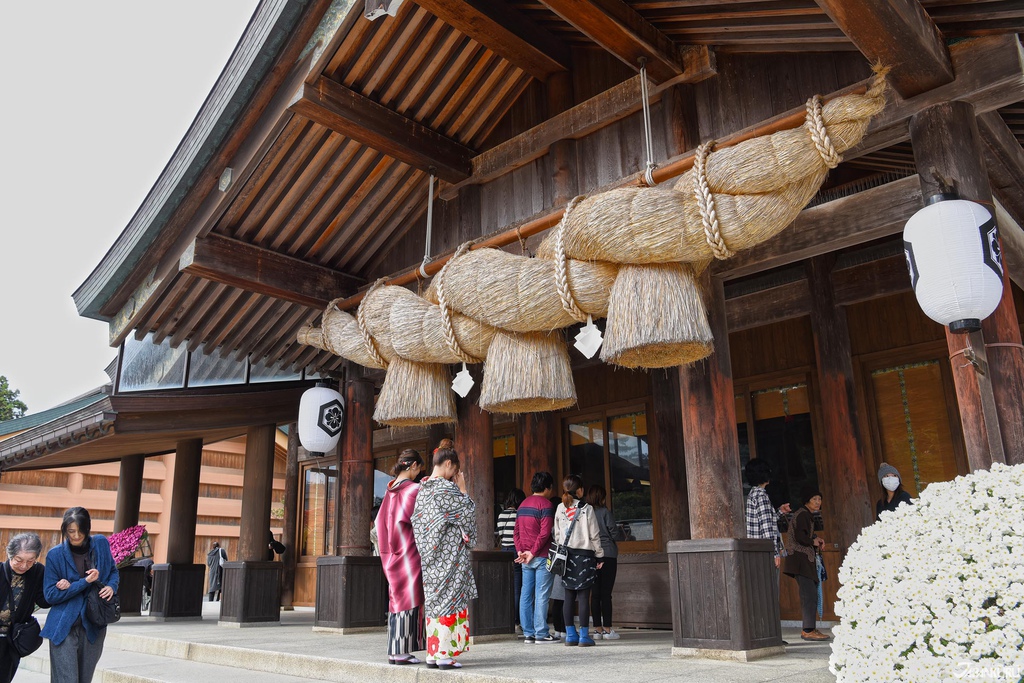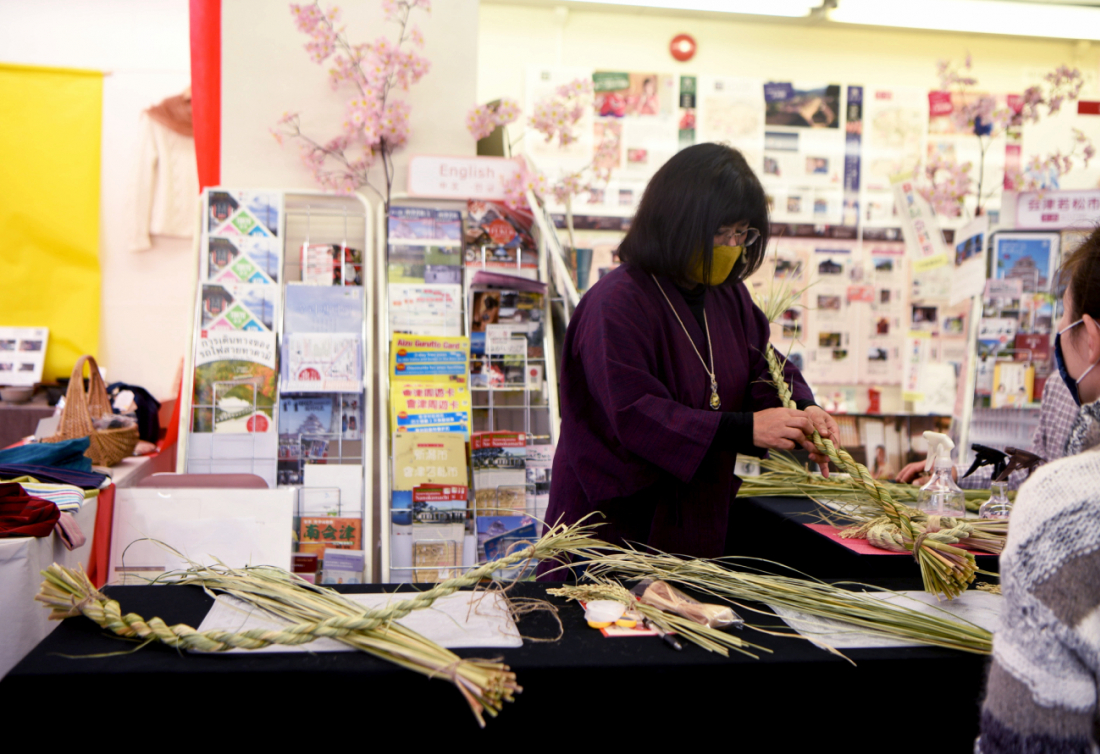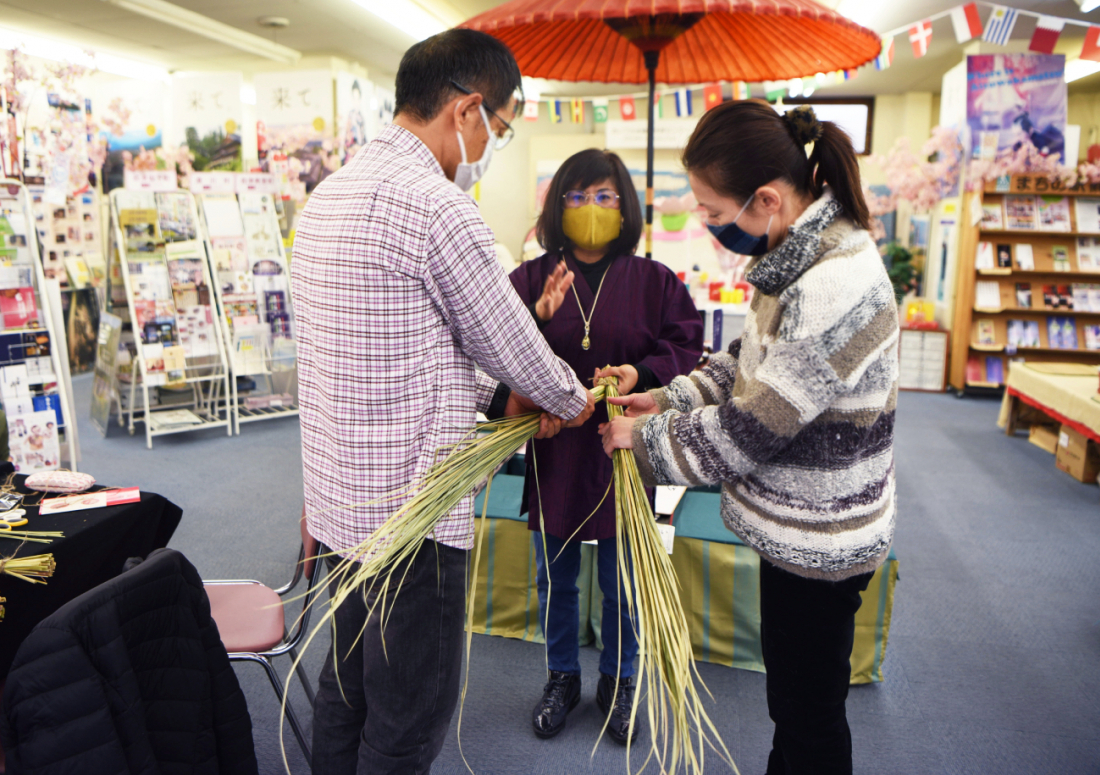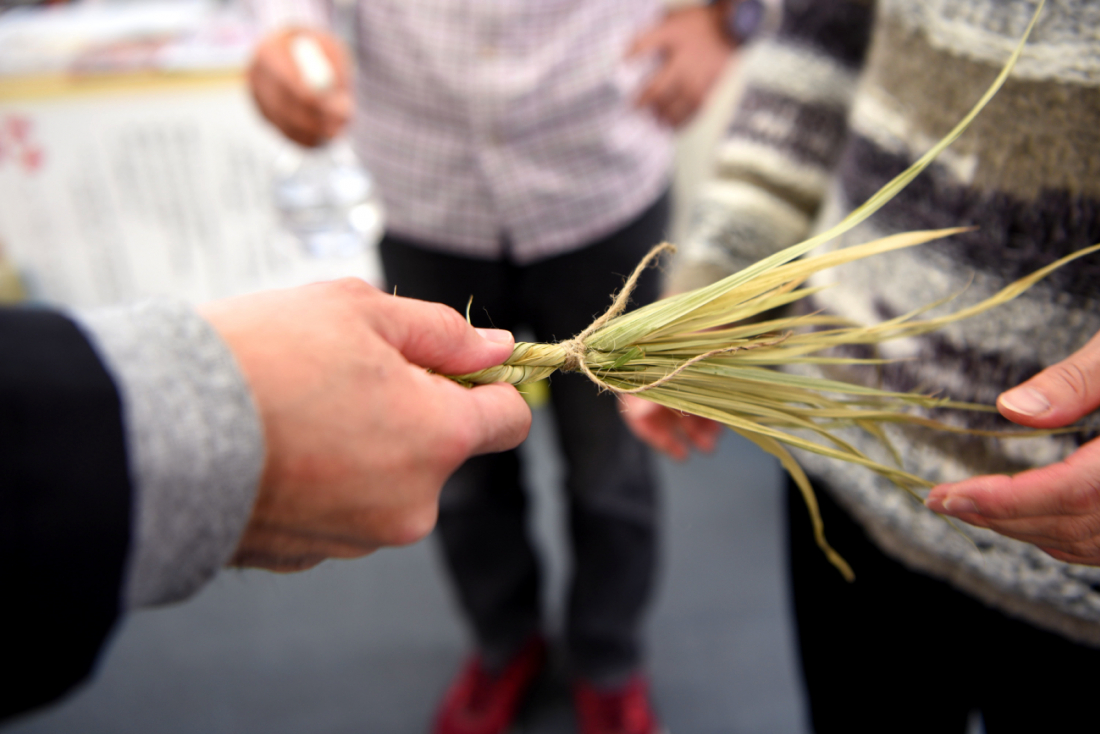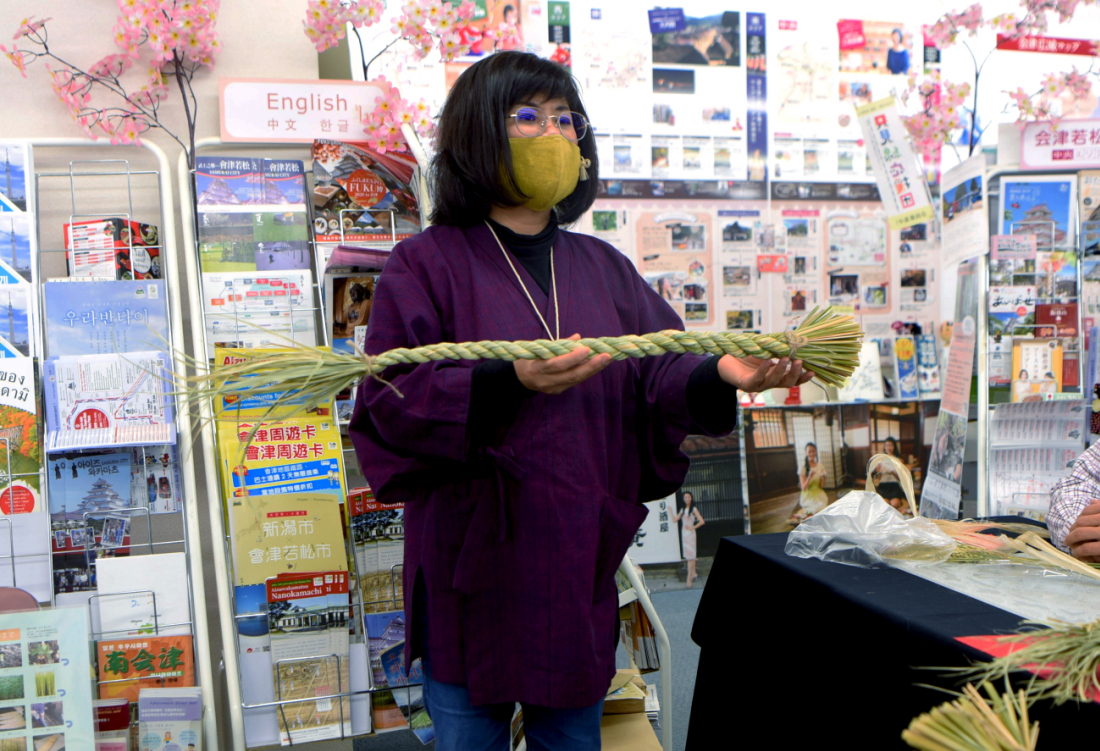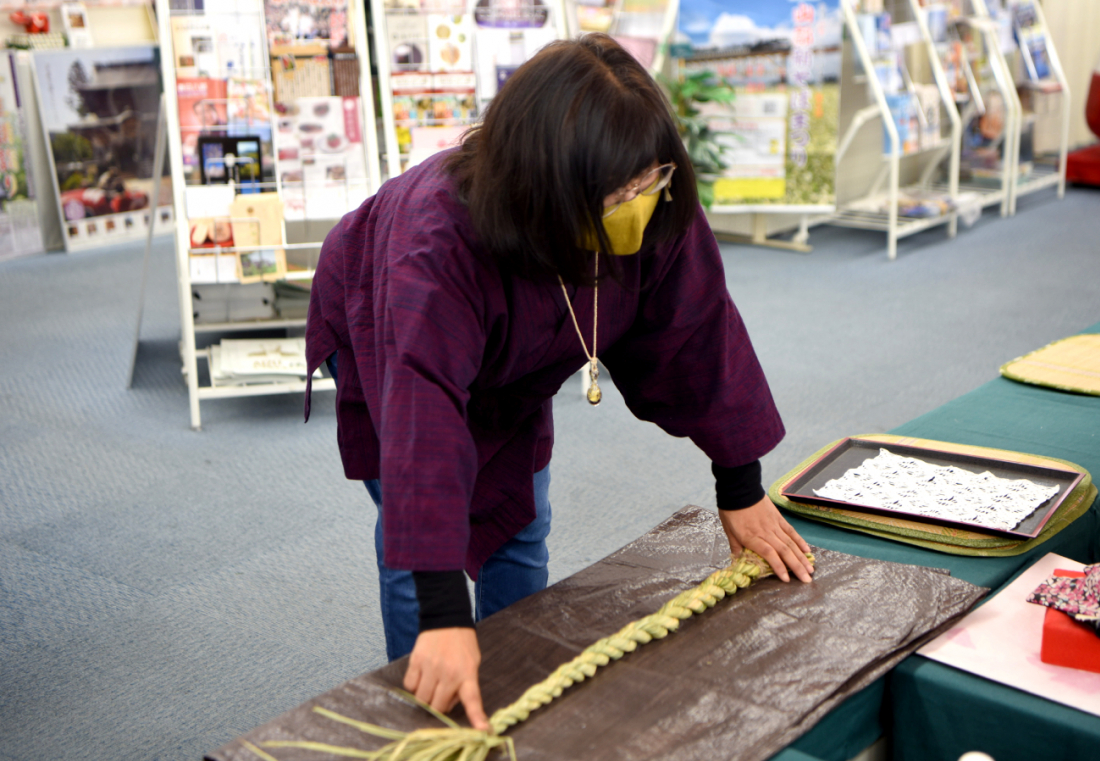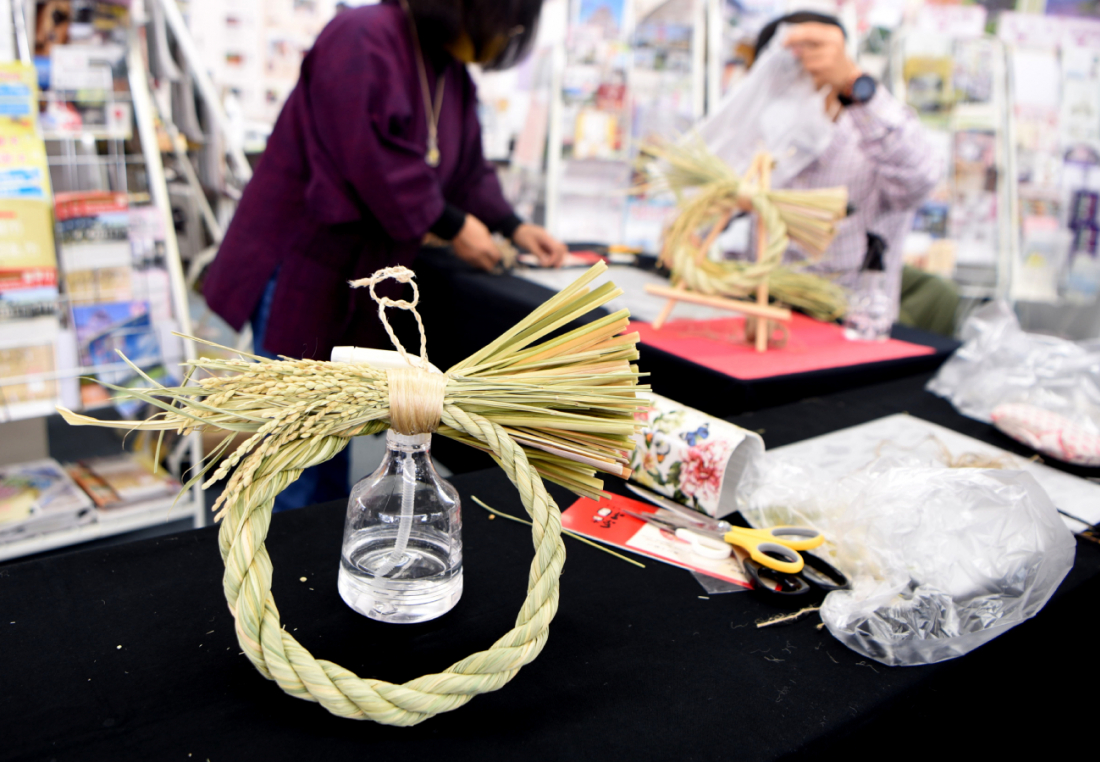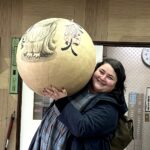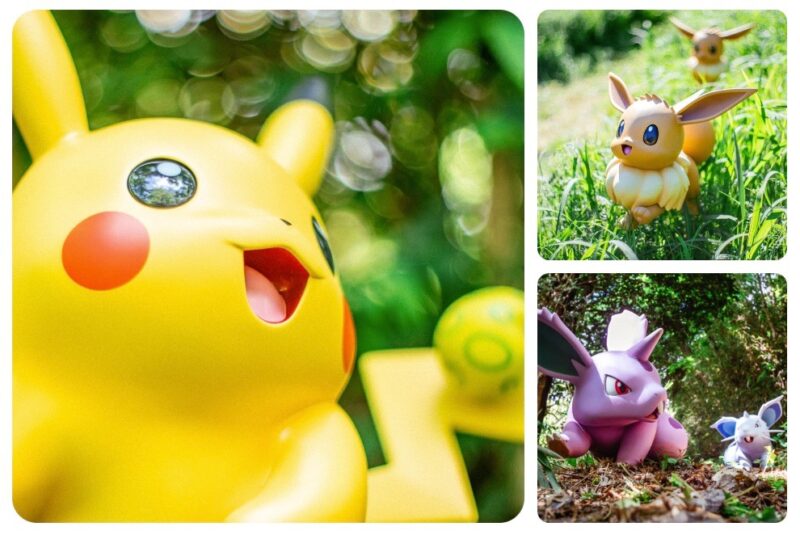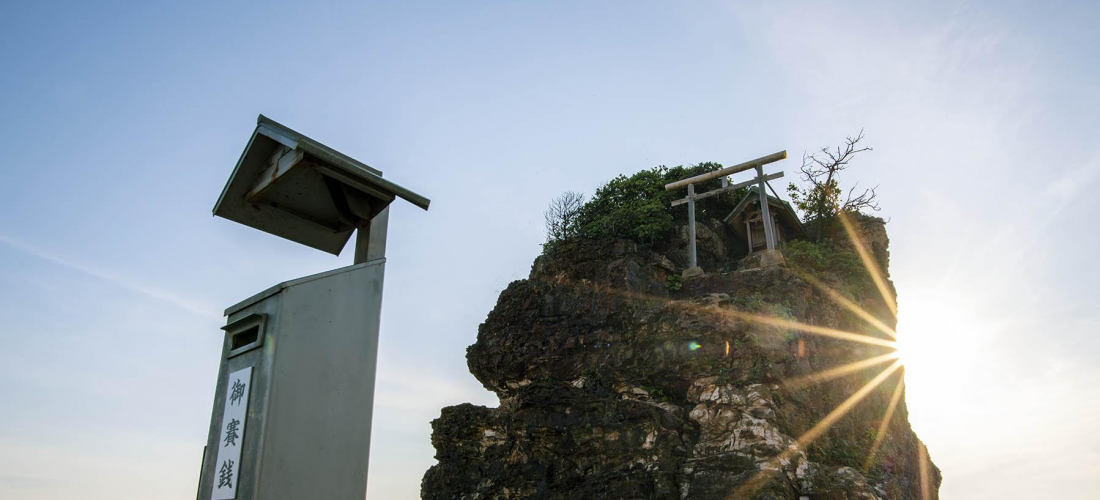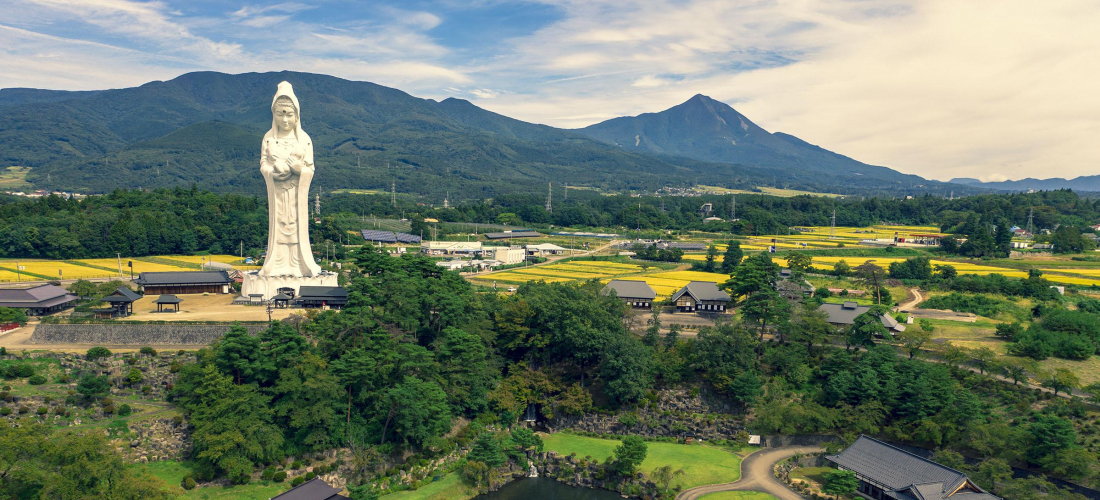Ever wondered about the straw ropes found at Shinto shrines and in Japanese homes? Find out more about shimenawa!
Shimenawa (しめ縄) are ropes made of rice straw and hemp, and thanks to their spiritual meaning in Shinto religion, they're found at Shinto shrines and in homes around Japan. Sometimes shimenawa symbolize purification, and often they're used to mark boundries between normal spaces and those that belong to the gods. The most recognizable shimenawa, especially for visitors to Japan, are the enormous ropes that hang in front of some of Japan's most important shrines. The shimenawa at the Izumo Taisha (出雲大社), perhaps the oldest shrine in Japan, weighs a whopping 5 tons! It's certainly hard to miss.
On a smaller scale, shimenawa are thought to ward off evil spirits, which is why you might spot one in a home or office as well. So, on a recent trip to Fukushima's bucolic region of Aizu, I rushed at the chance to participate in a shimenawa workshop run by local expert Kumiko Inomata, and make my own little safety charm to hang in the doorway of my tiny Tokyo apartmentーthe perfect way to get ready for a new year!
Shimenawa are generally made by twisting bunches of rice straw, specifically wild rice called makomo (真菰), and hemp, called seima (精麻) after being processed. If hemp doesn't seem like a particularly Japanese material, you might be surprised to find out that it's actually been used for spiritual purposes in Japan since long agoーto this day participants in certain Shinto festivals will wrap silky strips of hemp around their foreheads.
Fukushima's region of Aizu has its own connection to hemp, with a history of growing the plant for spiritual use. Unfortunately, despite the strong connection that residents still maintain with the history of Aizu, knowledge of this part of the area's history is lost to most locals. And that's where Kumiko Inomata comes in. Inomata is a craftsperson and a workshop leader in Aizu, who creates shimenawa and other Japanese crafts out of rice straw and hemp, and passes the knowledge on by teaching others. We started our workshop by learning all about the materials we would be working with, and why they were a meaningful part of Aizu culture.
But before long, we started the process of making our rope! We began by carefully separating our bunch of rice straw into three parts, in preparation for twisting it into a shape called "gobo-jime" (ごぼう締め), literally the shape of a burdock root, which is long and tapered on one end. In groups of three, we took turns twisting two out of the three bunches of rice straw together, first creating a deceptively simple (and really somewhat difficult) twist with the dry plant stalks. In the meantime, we kept spraying the rice with water, so it wouldn't dry out completely and start to break!
Each of us chose and guided our teammates on just how tight or loose we wanted the twist to turn out, giving each of them a slightly different look.
But don't forget, I said we divided the rice straw into three parts! To complete the rope, we took our final bunch of makomo and tied it on, winding the individual strands of straw one way as we guided the whole thing in between the first two twists. Throughout the whole thing, Inomata reminded us we were finding our own paths as we manipulated the straw into just the right shape, and just the right place.
Finally, with all three bunches tied off, we had a shimenawa! But we weren't done yet.
First, we laid out the ropes and pushed with the heels of our hands along the entire length, on each side, to shift the pieces around and even things out. After that, each of the ropes stood straight and beautiful, ready for use!
Then came the final step, where we took a little bunch of the dried wild rice, and a long strip of hemp, and tied the whole thing in a lovely loop. The final step was to use the palms of our hands to twist the strands of hemp into a thin twine, rubbing our hands together like we were chilly in the autumn Tohoku air, so as to bring the hemp fibers together.
Here's the final product! My very own shimenawa, made of makomo and seima, ready to keep evil away from me in 2021! It's been a rough year for everyone, so I'm really counting on this Aizu memento to bring us a little more luck sometime soon. For now, it's a lovely everyday reminder of my fun trip to Fukushima.
Interested in making your own shimenawa with Kumiko Inomata? Find her, and make a reservation, at Yuimaru.
Half a lifetime ago I came to Japan for a semester abroad... and I never left. I guess I really like the place! I spent my first few years in Japan living in the middle of nowhere, so I'd love to hear your Tokyo recommendations via Japankuru's social media accounts!
COMMENT
FEATURED MEDIA
VIEW MORE 
A New Tokyo Animal Destination: Relax & Learn About the World’s Animals in Japan
#pr #japankuru #anitouch #anitouchtokyodome #capybara #capybaracafe #animalcafe #tokyotrip #japantrip #카피바라 #애니터치 #아이와가볼만한곳 #도쿄여행 #가족여행 #東京旅遊 #東京親子景點 #日本動物互動體驗 #水豚泡澡 #東京巨蛋城 #เที่ยวญี่ปุ่น2025 #ที่เที่ยวครอบครัว #สวนสัตว์ในร่ม #TokyoDomeCity #anitouchtokyodome

Shohei Ohtani Collab Developed Products & Other Japanese Drugstore Recommendations From Kowa
#pr #japankuru
#kowa #syncronkowa #japanshopping #preworkout #postworkout #tokyoshopping #japantrip #일본쇼핑 #일본이온음료 #오타니 #오타니쇼헤이 #코와 #興和 #日本必買 #日本旅遊 #運動補充能量 #運動飲品 #ช้อปปิ้งญี่ปุ่น #เครื่องดื่มออกกำลังกาย #นักกีฬา #ผลิตภัณฑ์ญี่ปุ่น #อาหารเสริมญี่ปุ่น

도쿄 근교 당일치기 여행 추천! 작은 에도라 불리는 ‘가와고에’
세이부 ‘가와고에 패스(디지털)’ 하나면 편리하게 이동 + 가성비까지 완벽하게! 필름카메라 감성 가득한 레트로 거리 길거리 먹방부터 귀여움 끝판왕 핫플&포토 스폿까지 총집합!
Looking for day trips from Tokyo? Try Kawagoe, AKA Little Edo!
Use the SEIBU KAWAGOE PASS (Digital) for easy, affordable transportation!
Check out the historic streets of Kawagoe for some great street food and plenty of picturesque retro photo ops.
#pr #japankuru #도쿄근교여행 #가와고에 #가와고에패스 #세이부패스 #기모노체험 #가와고에여행 #도쿄여행코스 #도쿄근교당일치기 #세이부가와고에패스
#tokyotrip #kawagoe #tokyodaytrip #seibukawagoepass #kimono #japantrip

Hirakata Park, Osaka: Enjoy the Classic Japanese Theme Park Experience!
#pr #japankuru #hirakatapark #amusementpark #japantrip #osakatrip #familytrip #rollercoaster #retrôvibes #枚方公園 #大阪旅遊 #關西私房景點 #日本親子旅行 #日本遊樂園 #木造雲霄飛車 #히라카타파크 #สวนสนุกฮิราคาตะพาร์ค

🍵Love Matcha? Upgrade Your Matcha Experience With Tsujiri!
・160년 전통 일본 말차 브랜드 츠지리에서 말차 덕후들이 픽한 인기템만 골라봤어요
・抹茶控的天堂!甜點、餅乾、飲品一次滿足,連伴手禮都幫你列好清單了
・ส่องมัทฉะสุดฮิต พร้อมพาเที่ยวร้านดังในอุจิ เกียวโต
#pr #japankuru #matcha #matchalover #uji #kyoto #japantrip #ujimatcha #matchalatte #matchasweets #tsujiri #말차 #말차덕후 #츠지리 #교토여행 #말차라떼 #辻利抹茶 #抹茶控 #日本抹茶 #宇治 #宇治抹茶 #日本伴手禮 #抹茶拿鐵 #抹茶甜點 #มัทฉะ #ของฝากญี่ปุ่น #ชาเขียวญี่ปุ่น #ซึจิริ #เกียวโต

・What Is Nenaito? And How Does This Sleep Care Supplement Work?
・你的睡眠保健品——認識「睡眠茶氨酸錠」
・수면 케어 서플리먼트 ‘네나이토’란?
・ผลิตภัณฑ์เสริมอาหารดูแลการนอน “Nenaito(ネナイト)” คืออะไร?
#pr #japankuru #sleepcare #japanshopping #nenaito #sleepsupplement #asahi #睡眠茶氨酸錠 #睡眠保健 #朝日 #l茶胺酸 #日本藥妝 #日本必買 #일본쇼핑 #수면 #건강하자 #네나이토 #일본영양제 #อาหารเสริมญี่ปุ่น #ช้อปปิ้งญี่ปุ่น #ร้านขายยาญี่ปุ่น #ดูแลตัวเองก่อนนอน #อาซาฮิ

Japanese Drugstore Must-Buys! Essential Items from Hisamitsu® Pharmaceutical
#PR #japankuru #hisamitsu #salonpas #feitas #hisamitsupharmaceutical #japanshopping #tokyoshopping #traveltips #japanhaul #japantrip #japantravel

Whether you grew up with Dragon Ball or you just fell in love with Dragon Ball DAIMA, you'll like the newest JINS collab. Shop this limited-edition Dragon Ball accessory collection to find some of the best Dragon Ball merchandise in Japan!
>> Find out more at Japankuru.com! (link in bio)
#japankuru #dragonball #dragonballdaima #animecollab #japanshopping #jins #japaneseglasses #japantravel #animemerch #pr

This month, Japankuru teamed up with @official_korekoko to invite three influencers (originally from Thailand, China, and Taiwan) on a trip to Yokohama. Check out the article (in Chinese) on Japankuru.com for all of their travel tips and photography hints - and look forward to more cool collaborations coming soon!
【橫濱夜散策 x 教你怎麼拍出網美照 📸✨】
每次來日本玩,是不是都會先找旅日網紅的推薦清單?
這次,我們邀請擁有日本豐富旅遊經驗的🇹🇭泰國、🇨🇳中國、🇹🇼台灣網紅,帶你走進夜晚的橫濱!從玩樂路線到拍照技巧,教你怎麼拍出最美的夜景照。那些熟悉的景點,換個視角說不定會有新發現~快跟他們一起出發吧!
#japankuru #橫濱紅磚倉庫 #汽車道 #中華街 #yokohama #japankuru #橫濱紅磚倉庫 #汽車道 #中華街 #yokohama #yokohamaredbrickwarehouse #yokohamachinatown

If you’re a fan of Vivienne Westwood's Japanese designs, and you’re looking forward to shopping in Harajuku this summer, we’ve got important news for you. Vivienne Westwood RED LABEL Laforet Harajuku is now closed for renovations - but the grand reopening is scheduled for July!
>> Find out more at Japankuru.com! (link in bio)
#japankuru #viviennewestwood #harajuku #omotesando #viviennewestwoodredlabel #viviennewestwoodjapan #비비안웨스트우드 #오모테산도 #하라주쿠 #日本購物 #薇薇安魏斯伍德 #日本時尚 #原宿 #表參道 #japantrip #japanshopping #pr

Ready to see TeamLab in Kyoto!? At TeamLab Biovortex Kyoto, the collective is taking their acclaimed immersive art and bringing it to Japan's ancient capital. We can't wait to see it for ourselves this autumn!
>> Find out more at Japankuru.com! (link in bio)
#japankuru #teamlab #teamlabbiovortex #kyoto #kyototrip #japantravel #artnews
Photos courtesy of teamLab, Exhibition view of teamLab Biovortex Kyoto, 2025, Kyoto ® teamLab, courtesy Pace Gallery

Japanese Makeup Shopping • A Trip to Kamakura & Enoshima With Canmake’s Cool-Toned Summer Makeup
#pr #canmake #enoshima #enoden #에노시마 #캔메이크 #japanesemakeup #japanesecosmetics

⚔️The Robot Restaurant is gone, but the Samurai Restaurant is here to take its place. Check it out, and don't forget your coupon!
🍣신주쿠의 명소 로봇 레스토랑이 사무라이 레스토랑으로 부활! 절찬 쿠폰 발급중
💃18歲以上才能入場的歌舞秀,和你想的不一樣!拿好優惠券去看看~
#tokyo #shinjuku #samurairestaurant #robotrestaurant #tokyotrip #도쿄여행 #신주쿠 #사무라이레스토랑 #이색체험 #할인이벤트 #歌舞伎町 #東京景點 #武士餐廳 #日本表演 #日本文化體驗 #japankuru #japantrip #japantravel #japanlovers #japan_of_insta

Japanese appliance & electronics shopping with our KOJIMA x BicCamera coupon!
用JAPANKURU的KOJIMA x BicCamera優惠券買這些正好❤️
코지마 x 빅 카메라 쿠폰으로 일본 가전 제품 쇼핑하기
#pr #japankuru #japanshopping #kojima #biccamera #japaneseskincare #yaman #dji #osmopocket3 #skincaredevice #日本購物 #美容儀 #相機 #雅萌 #日本家電 #일본여행 #면세 #여행꿀팁 #일본쇼핑리스트 #쿠폰 #일본쇼핑 #일본브랜드 #할인 #코지마 #빅카메라 #japankurucoupon
MAP OF JAPAN
SEARCH BY REGION

LATEST
VIEW MOREEVENT CALENDAR
VIEW MORE





